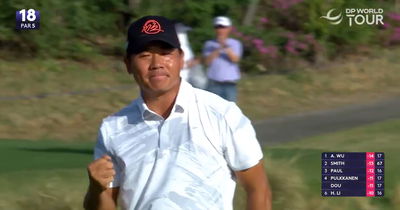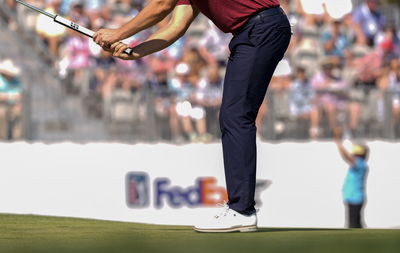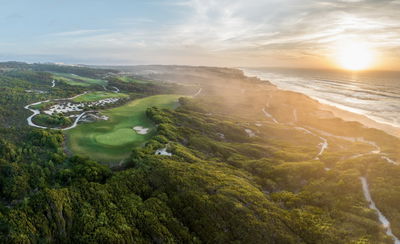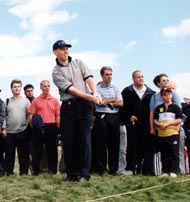 |
Use soft hands from the edge of the green to copy the pros.
|
Soft hands for chipping
The pros with the best short games in golf have terrific feel. The tiny vibrations that emerge from ball at impact on to clubface, work their way through the shaft and handle into the palms and finger tips.
It almost defies description but the best players have it. For amateurs the best way to get it is to play those delicate chip shots around the green with ‘soft hands.’
Amateur golfers tense up and almost strangle the club in a bid to induce extra control but by thinking ‘soft hands’ and gripping the club lightly to make a slow rhythmical swing produces the best results.
Concentrate on striking the bottom of the ball and you will feel it climb up the clubface with backspin, loft on to the green, bounce, check and roll towards the hole.
How to read putts
The first green will tell you a great deal about the course. (more so than the practice green). If there’s dew on the ground consider the lines previous golfers have made with their putts and how they curve as the ball slows towards the hole.
The way the green has been cut will tell you a lot about the pace of your putt. When you look from ball to hole the dark lines (grass cut towards you) will tend to roll the ball slower and with less curve or break than the lighter lines (grass cut away from you).
Concentrate. Don’t just go through the motions, when waiting your turn to putt and notice how colleagues’ putts, turn, speed up and slow down as they approach the hole. It’s often worth looking at the undulations from the side of your line. Most important, be ready to play when it’s your turn, make your decision and roll your golf ball.
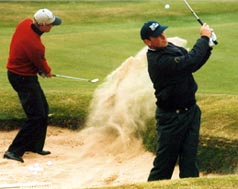 |
Practise your bunker technique.
|
Sandy swing thoughts
Sand bunker shots tend to strike fear into the minds of most amateur golfers. Negative thoughts of leaving the ball in there, thinning into a bunker beyond the green or merely embarrassing yourself, fill your head.
Concentrate on the flange on your sand iron (the chunky curved bit at the bottom)…not the sharp, leading edge. Its shape below and behind the clubface is carefully designed to help the ball back into play so make the most of it.
Picture how the flange will be the first thing to make contact with the sand as you swing the club down. Effectively, this part hits the surface first from an out to in path, slides under the ball and lifts it out on a cushion of sand .
Remember, slap the bottom of the club into the sand as if it’s the back of your hand and watch the ball pop out.
*Main picture of Seve Ballesteros courtesy of
Sport Photo Gallery.







